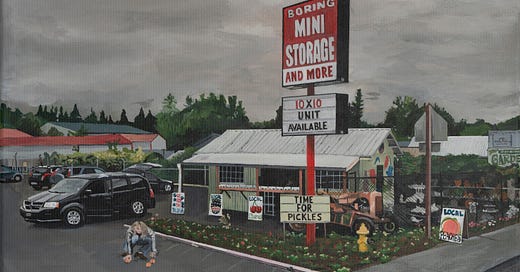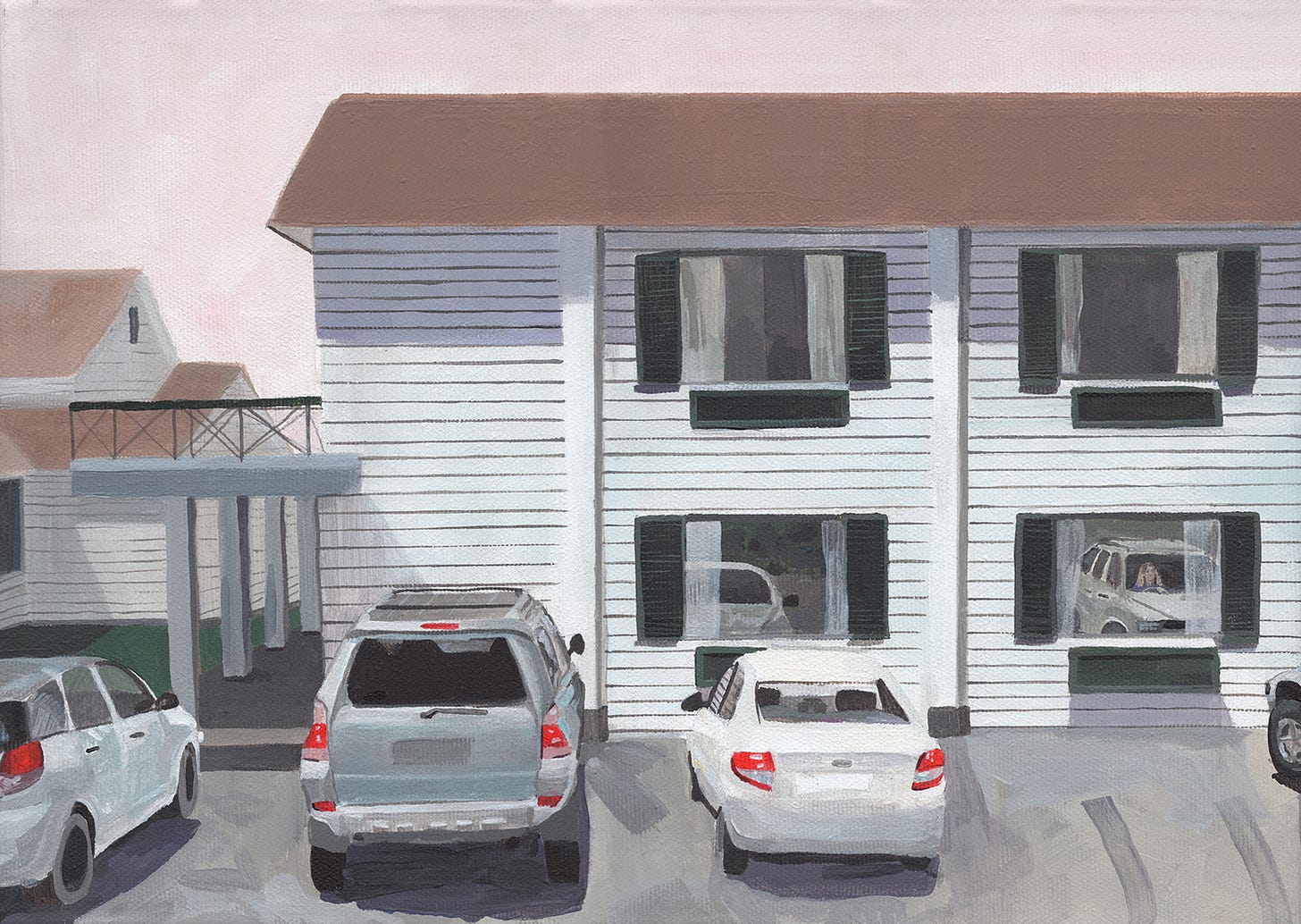Asta Ostrovskaja's Surreal Urban Paintings of Parking Lots from Google Satellite Images
A conversational article with Asta about her paintings of parking lots
One of the first things I was told as an aspiring artistic practitioner myself, was that art is no longer about pretty flowers and golden yellow sunsets, as it used to be a few hundred years ago. Today art is a tool used for activism, a process used for reflection and an artefact used in documentation amongst much else. Asta Ostrovskaja, an artist based in Vilnius, Lithuania uses art as a medium through which she explores and engages with the world virtually. Many of her paintings, that are inspired by google satellite images, have a surreal twist to them that allow her to add a layer of interpretation to the places that she is seeing on her screen. In this conversation I speak with Asta about the many parking lots that often feature in her artistic works.
oP: When did you start painting google satellite images?
Asta: I started working on this project just when the Covid started, when all the travel plans were canceled, going on a road trip on Google Street View had a therapeutic effect I guess.
oP: A lot of your paintings feature parked cars and other urban settings. What about this kind of imagery is appealing to you?
Asta: I think it can be highly influenced by the imagery which is captured on Google Street View. This is the most popular navigation/ map which is used on almost every corner of the earth, and almost all of the data is collected by the driving car. I think that influences the visual outcome – automotive element become inseparable from the maps because the viewing point of the map is the point of the car (in most of the cases).
oP: How do you think your practice has evolved to your current interests and work?
Asta: I’d say it happened vice versa. My interests evolved into this specific practice. I work in multidisciplinary fields, which means that I search for the best medium to tell the visual story I want to tell. For example, before I worked on a project where I was documenting Pet Cemeteries (Called “Rex in Peace”) and I did that in a photographic way, because the pictures themselves had enough of “visual weight” to tell the story. For this project I wanted to depict global mundane landscapes and I thought painting as a medium would be the most suitable way to do that, since landscape painting has been a part of a visual art culture for so long and connecting it to the digital imagery had an intriguing visual twist from my point of view.

oP: You mentioned that you like to give your depictions of satellite images from google, a surreal twist like in the images shown above where you have rendered all the cars with flat tires. Can you elaborate on this idea of surreal-ness? What about it do you think is interesting and/or works for your vision of the work that you do?
Asta: I do that to exaggerate the atmosphere of the visual. In this specific painting my goal was to enhance the stillness of this parking lot. And also in almost all of my paintings in this series you can feel a human presence though it is never straight forward. (as it is here depicted with the glowing red lights of the only moving car)
oP: How do you decide which google satellite image to paint? Do you have some sort of criteria? What's the process of choosing like?
Asta: When I research the areas for an upcoming painting I know what kind of atmosphere I want to depict. Some of my paintings are busy with elements, some of them are filled with space. But all the scenery I choose do have some aspects which unite them into this one project. When I “drive” through the streets, I look around as if I am a passenger on a real life road trip and I try to find some unexpected elements in expected surroundings.
oP: Painting from life is often about representing the world before the painter's eyes. Why do you choose to depart from classic still life by embedding the adding element of surreal-ness to your work?
Asta: By doing that I make this project more authentic. I am not working on photorealism, where it would be hard to distinguish whether it is a photo or a painting. I would describe this style as photo-surrealism, where I use a visual of the real world and add a layer of an “error” to it.
oP: Where do you get your inspiration for surreal ideas from?
Asta: Everyday life. And Light.
oP: Could you describe your travels to America and other countries to tell us if and how they have influenced your ideas of urban imagery?
Asta: I guess the easiest way to describe it is that I enjoy road trips. I think this mode of travel holds an element of cinematic storytelling which is also appealing to me.
oP: Do you have any thoughts, ideas and reflections on parking lots and their phenomenon in the city that you’re from i.e Vilnius, Lithuania ?
Asta: Almost every urban area, which is outside of the historic center that was built during soviet occupation have the element of parking in some form or the other. Urban planning did not take into account that cars would be such an inseparable aspect of life, so right now Vilnius is trying to solve the parking problem because people often park cars in areas, like kids playgrounds, or lawns or near apartment buildings inadvertently narrowing the streets, which in turn means that there is less space for cars to drive, but more area for parking, bicycle lanes and pedestrians.
Asta Ostrovskaja is an Art Director, with a background in Visual Arts and Graphic Design. She has in the recent past been making paintings of urban landscapes, often featuring parking lots with a unique twist of her own. In her words she says, “I love an abstract form of documentation of contemporary life, which means that I am always searching for topics that I feel reflect an unusual angle of mundane moments.”









